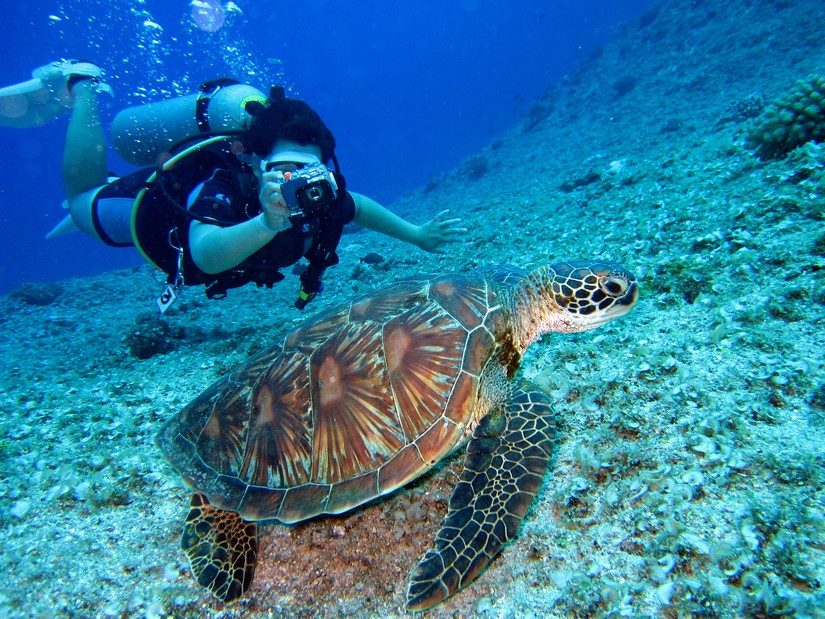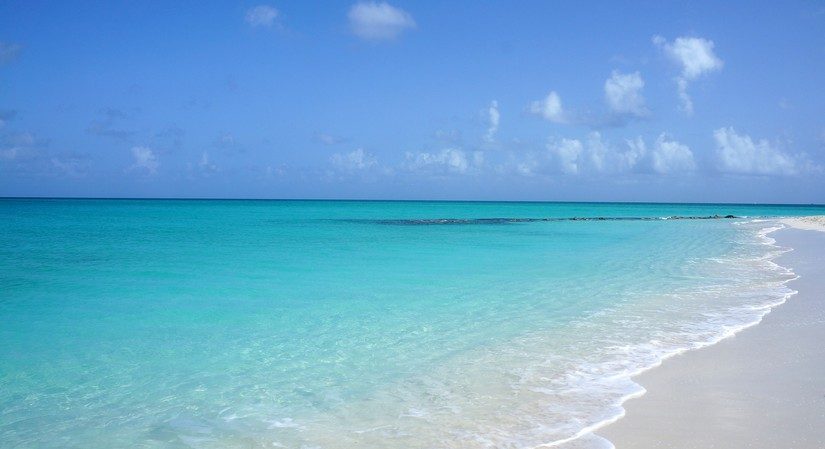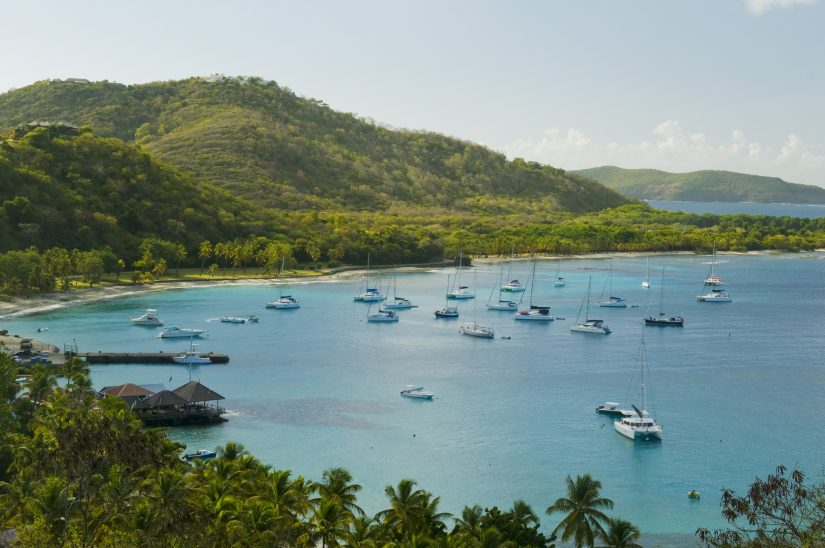The Caribbean is famous for its calm, and warm turquoise waters fringed with beautiful white beaches and an incredibly diverse variety of marine life. It is no wonder then that the Caribbean is one of the world’s most popular locations for scuba diving. The Caribbean has over 7,000 islands which include 13 nations and 12 overseas territories, ensuring endless options for even the most avid divers. Our team at Exceptional Villas spend much of their time exploring the region and have an in-depth knowledge of the best Caribbean diving destinations.
Here are our best Caribbean Diving Destinations:
CAYMAN ISLANDS
Of all the Cayman Islands, Grand Cayman offers some of the best diving spots in the Caribbean and is very popular with scuba divers of all standards. Diving opportunities here are spectacular, with excellent visibility and exceptionally comfortable water temperatures where over 500 species of fish call home.
Grand Cayman offers both shore diving on colorful coral reefs with little or no current, a spectacular wreck dive, and wall diving providing excellent opportunities to observe spotted eagle rays and sea turtles.
The Devil’s Grotto on South Shore features schools of glittering platinum tarpon and silverside minnows, darting in and out of the honeycombed coral formations and tunnels which can be up to 50 feet deep.
On the West side of the island, Big Tunnels is an enormous passageway, wide enough for a couple of trucks to pass through, side by side. There are many spiral routes up through the coral where you will see a wide variety of aquatic life including spiny lobsters, green sea turtles, orange tube sponges and several bottle-tip anemone colonies.
Wreck enthusiasts will relish in the sight of the former USS Kittiwake. This spectacular five-deck 250-foot submarine rescue ship sits comfortably in shallow clear waters just off of Seven Mile Beach. Divers can explore all levels of this beauty and navigate through the hospital station, the mess hall and ammunition lockers, finishing off perhaps with some time on the bridge.
The Grand Cayman wall encompasses the entire island with dive sites dotted around all four sides. The most sensational dive has its location at Babylon on the north wall.
The sandy flats on top of the wall offer much to see for the novice diver. But, as you dive deeper, you will witness unparalleled marine beauty. A medley of black coral provides an anchor to giant purple sea fans and barrel sponges. At the same time, the communities of parrotfish, green and hawksbill turtles, barracuda and hammerheads swim busily around together, providing spectacular entertainment.
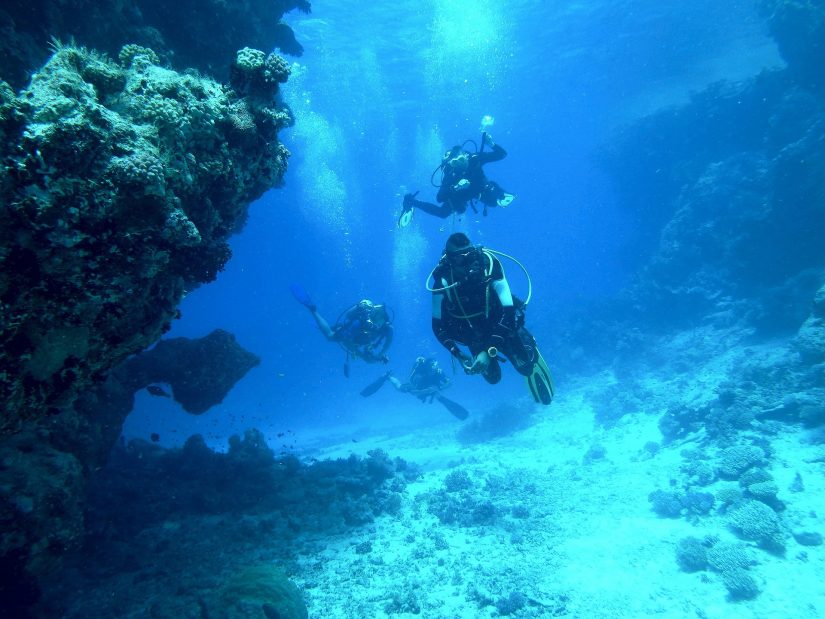
Ghost Mountain has its location on the north coast of Grand Cayman. As you approach the area underwater, giant pinnacle greets and appears through the aquamarine water magically. Carpeted with colorful red finger sponges, starlet corals and banded coral shrimp the feature is enchanting. Advanced divers venturing to a depth of 30m will be rewarded with superb spectacles of caverns crowded with Alcyonacea.
The most famous Grand Cayman Diving is at Stingray City, where crowds of these graceful and amiable creatures congregate waiting for a quick meal. The Stingray City dive is approximately 15 feet deep and offers a fun experience for divers to frolic with and feed the rays in a habitat awash with multiple species of fabulous tropical fish.
Diving is good almost all year round in Grand Cayman. If you’re planning your vacation on the diving opportunities available, Grand Cayman is a perfect choice and no wonder it is in our top 8 list for the best Caribbean diving.
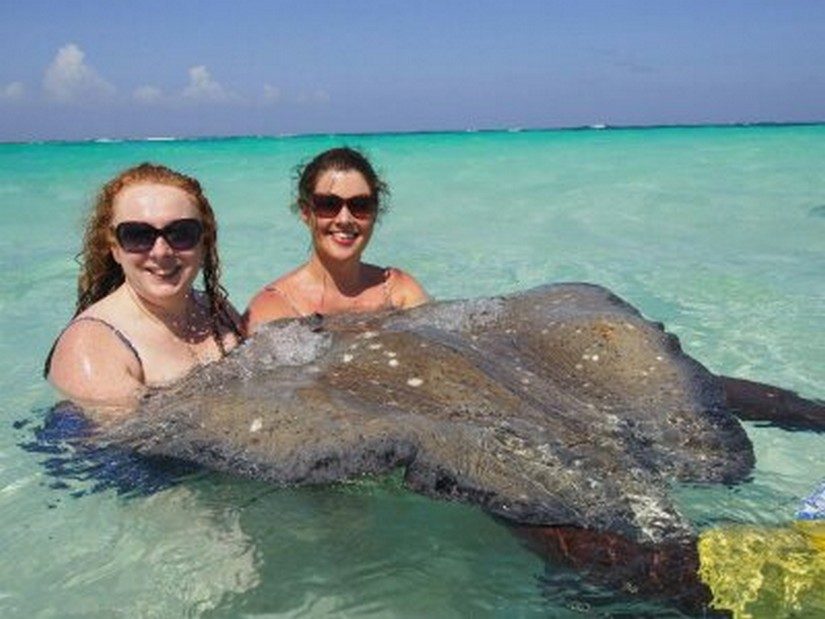
BAHAMAS
The Bahamas is undoubtedly one of the best Caribbean diving destinations. The sheer size of The Bahamas with its 700 plus islands and cays to explore ensure that the options for diving are limitless.
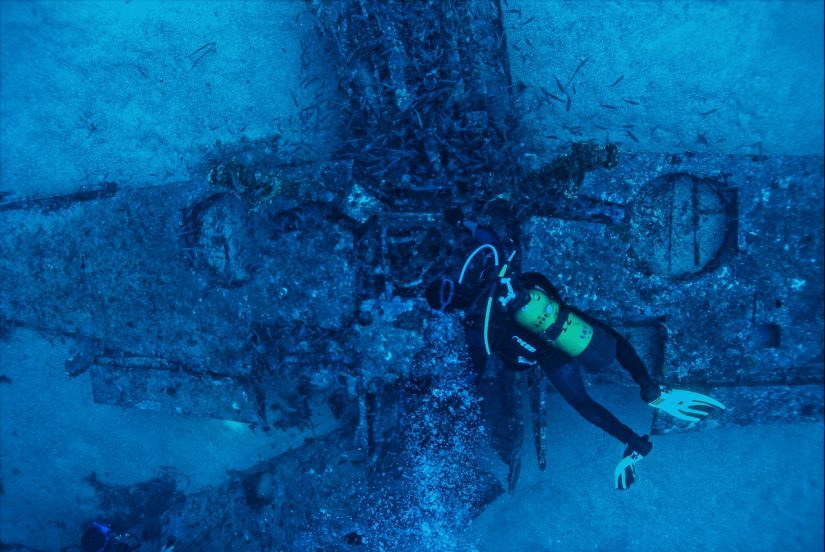
The fact that The Bahamas have their location in the meeting point between the Wild Atlantic Ocean and the calm waters of The Caribbean Sea ensure that the region offers an incredible marine life diversity. No matter where you stay, or which one of the Bahamas Vacation Rentals you chose to make your home, you are sure to find a great dive site worth exploring.
The Bahamas are probably most famous for shark spotting, but diving in the Bahamas includes some of the world’s most spectacular drop-offs, blue Holes, caverns, tunnels, deep caves and exciting wrecks. The Bahamas also have the third largest offshore barrier reef.
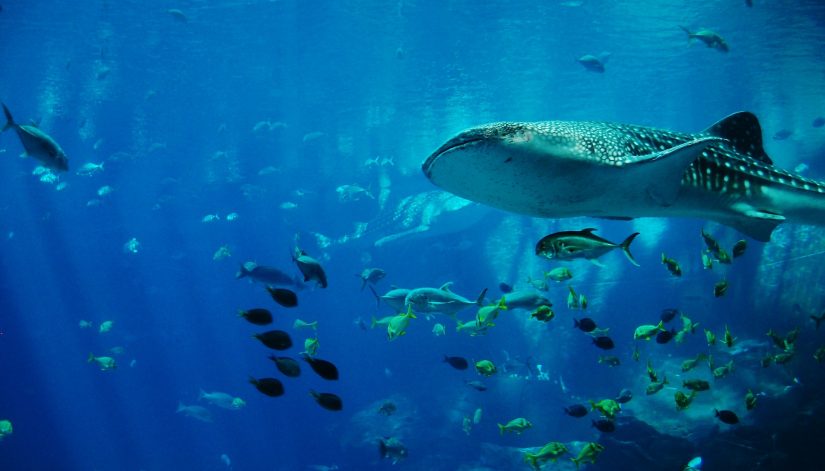
The Bahamas genuinely have some of the best scuba diving in the Caribbean. Just some of the most well-known sites include The Washing Machine in The Exumas, Current Cut in Eleuthera, Pelican Cay in the Abacos, Tiger Beach in Grand Bahama and Columbus Point in Cat Island.
Also, the near-perfect subtropical climate with approximately 340 days of sun each year ensures excellent conditions for diving. Above all, the diversity for the real avid diver is hard to beat with each one of the 700 islands offering a unique diving experience.
TURKS AND CAICOS
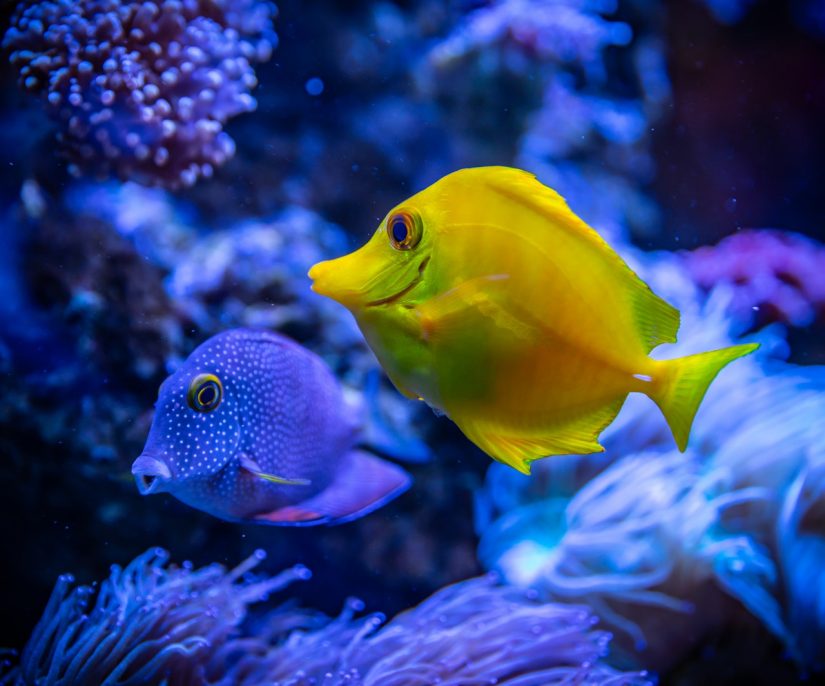
The stunningly beautiful and sparsely populated islands of the Turks and Caicos are circled by some of the most turquoise blue waters in the world, creating a scuba divers dream location and some of the best places to dive in the Caribbean.
The Turks and Caicos are home to a vast and thriving coral reef ecosystem. There are plenty of walls and exciting wrecks to explore, and with its location just south of Florida and The Bahamas, the 40 islands and cays are also surprisingly accessible.
There are 40 Turks and Caicos Islands, with just 8 of them inhabited. The most popular one is Providenciales, and because many of the best Turks and Caicos Villas have their location here, it is a popular base from which to explore the other islands.
The Turks and Caicos Islands comprise of two separate island groups; One of the island groups called Turks and the other called Caicos. The two island groups are separated by The Columbus Passage which is a 35 kilometer wide and up to 7000 feet deep channel famous for its migrating fish, turtles, stingrays, dolphins and most famously for its humpback whales which migrate through the channel during January to March.
The other wonderful thing about diving in the Turks and Caicos Islands is the fact that the National Parks Ordinance protects a large percentage of the island’s coastline. The result is a wonderfully pristine diving environment with an abundance of Marine Life.
Some of the best dive spots in Turks and Caicos include Salt Cay located in the Columbus Passage, Grace Bay on the island of Provo, French Cay just south of Provo, French Cay and Grand Turk, the capital and home to the Columbus National Marine Park.
The Turks and Caicos Islands also share the Lucayan Archipelago with the Bahamas islands affording even more great diving options. Should you wish to enjoy other activities whilst on Turks and Caicos, this Essential Turks and Caicos Travel Guide has a wealth of information.
JAMAICA
Montego Bay, Negril and Ocho Rios, all on the north shores of Jamaica, offer excellent dive spots with an abundance of marine life and excellent visibility. With over 100 active dive spots to choose from, divers of all levels can find a suitable area for their capability.
Jamaica is an excellent promoter of marine parks and reserves, making great efforts to protect the environment and marine life, and this, of course, all adds to the benefits for divers.
The Throne Room is the best-known dive site off the shores of Negril. Unusual coral formations and an abundance of ocean life ensure a superb dive experience. The Reef is named after the throne-shaped elephant ear sponge which thrives here. Dives provide an array of barracuda, eels, black corals, octopus, snappers and stingrays.
If you’re extra lucky, you may see a dolphin, a hammerhead shark or even an elusive nurse shark. At about 60 feet below the surface of the water, the contrast between light and dark is breathtaking.
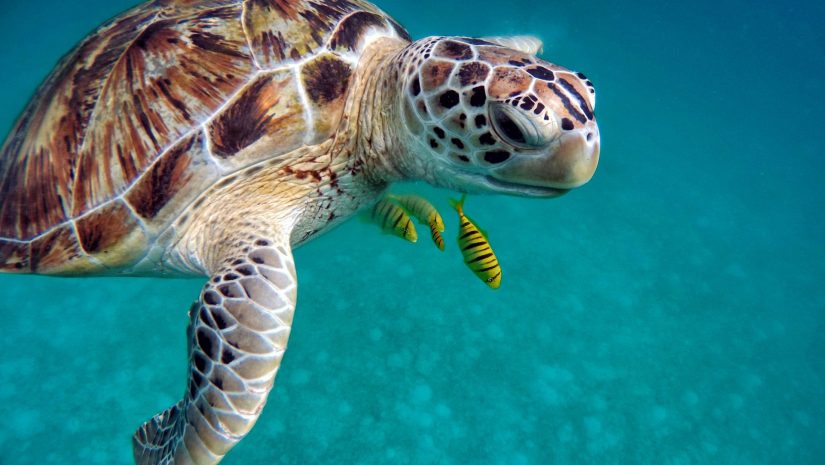
The worryingly named Widowmaker’s Cave is probably the most famous dive site located in Montego Bay. The name may immediately instill a sense of either fear or adrenalin (for the very brave), but fear not – it was named after the novel “Go to the Widow-Maker” by James Jones. The cave itself is a narrow tunnel with lots of nooks and cavities to explore.
Divers can either start the wall dive from the top, at an opening in the Reef at 35 foot or from the bottom at the 80-foot mark. Either route can be challenging in areas, but there are safety stops along the way. The walls covered in black coral provides a perfect background palette to highlight the colorful parrotfish, barracuda, blue angelfish and snapper going about their business.
Devil’s Reef located off the shores of Oho Rios is another great protected area and features a ridge encrusted with staghorn corals and black-ball sponges. The ridge has a gradual slope down to 65 feet, and then, at 130 feet, it drops steeply to a sandy bottom. Divers will enjoy a wide variety of colorful coral, moray eels, reef fish, lettuce sea slugs and nurse sharks.
The SS Kathryn was a WWII minesweeper wrecked off the coast of Ocho Rios. It is possible to dive around the wreck and venture inside the wheelhouse. The wreck is covered with barrel sponges and sea fans and is a hive of activity for stingrays, lobsters, sea snakes, snappers, hamlets, and sergeant majors.
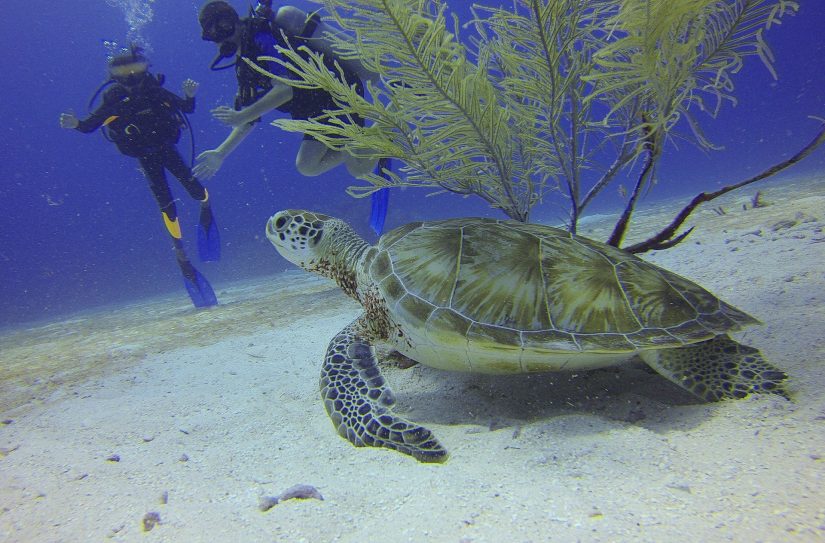
You don’t need to be a marine geologist to enjoy the impressive rock structures at both The Arches and The Caves, two dive sites situated off the shores of Negril where Stingrays and Sharks are in abundance.
“Sunken Plane” in Montego Bay is a huge attraction for divers of all levels. This vast plane lies sedately on the ocean floor and has become a permanent home for basket sponges, purple fans and basket sponges. Experienced divers can enter the plane to examine the inside. The plane attracts an abundance of sea life including parrotfish, snappers, starfish, porcupinefish, reef sharks, nurse sharks, barracudas and eels.
Divers may not historically know Jamaica as a world-class scuba diving destination; it certainly has a lot to offer. Divers can enjoy much exciting underwater exploration which ensures its inclusion in our best Caribbean dive sites list. And of course, if you fancy exploring Jamaica at the same time, take a look at this article on The Best Things to do In Jamaica.
ANTIGUA
The beautiful island of Antigua offers terrific diving opportunities for divers of all levels, with warm, turquoise waters, rainbows of colorful tropical fish, stretches of well-preserved coral reefs and of course a significant wreck.
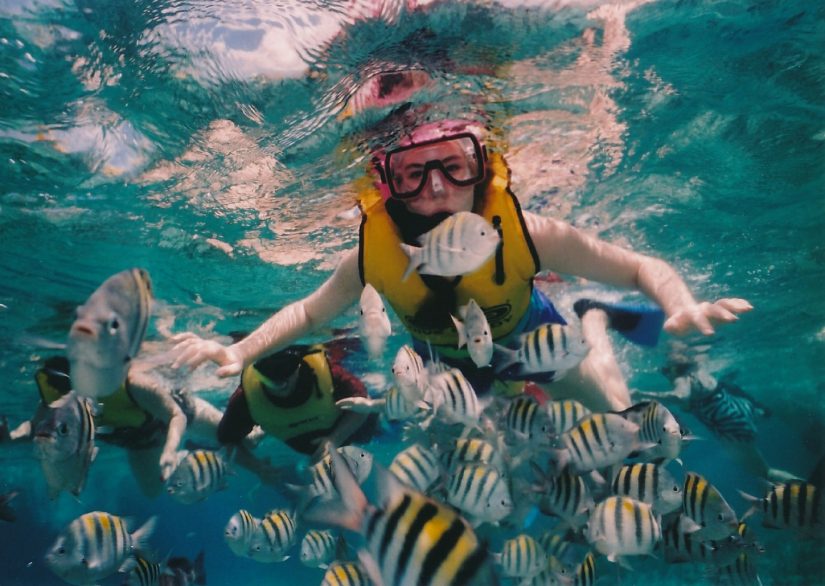
Antigua sits on a shallow bank with shelves surrounding the south and east coasts of the island, therefore providing superb conditions for spectacular diving. The currents are little to none in most places, and good visibility is the norm. Divers are guaranteed to become friends with sergeant majors, turtles, nurse sharks and even giant lobsters, not to mention schools of tropical fish.
Cades Reef is the best-known offshore dive site in Antigua. This seven miles stretch of Reef have their location in a designated underwater park and visibility can be up to 30 meters. Cades Reef is home to a vast abundance of sea creatures including spiny lobsters, conch, moral eels, parrotfish and barracuda.
One of the Reef’s features is The Chimney, a collection of massive coral pillars which create a natural staircase descending from 40 feet down to 80 feet. Beneath the chimney, divers can swim through a tunnel to view sleeping nurse sharks.
For wreck diving, The Andes is a must. In 1905, this ill-fated merchant ship was sailing to Chile with a cargo of tar and caught fire, sinking to its’ final resting place in Deep Bay. Interestingly enough, though located just off the beach in Deep Bay, the wreck of The Andes sits in less than 30 feet of water, making it easy to access for any level diver. The wreck is home to an abundance of coral and tropical fish and well worth exploring.
Another wreck dive worth a mention is Jettias, a French steam-powered freighter which sunk in 1817. The wreck is broken up and sits on the sandy bottom at around 8 metres. Coral covers the bottom of the wreck which is home to much colorful fish.
Sunken Rock is located off the south coast of Antigua and is famous for a day and night dives. This vast, submerged boulder begins at one meter below the surface of the water and drops to 35 meters. Various surrounding rock formations provide valleys and crevices to explore for lobster, Sea fans and barrel sponges. Beautiful red and black coral clings to the rocks, and busy parrotfish and angelfish scuttle. Schools of snapper and jacks are also in abundance at this underwater “rock concert”.
There are many more good dive sites around Antigua. Most are less than 30 meters deep and not far from shore. Antigua is home to some of the best Caribbean diving and some of the best villas in the region. For discerning travellers looking for ultra-luxury, take a look a the Jumby Bay Resort in Antigua.
COSTA RICA
Costa Rica is most famously known for its’ incredible flora, fauna and wildlife in plush rainforests throughout the country. However, Costa Rica is also known as the “Rich Coast” for more than just its’ inland attractions. Encompassed by both the Caribbean Sea and the Pacific Ocean, Costa Rica is home to a wide variety of aquatic life and one of the best dive spots in the Caribbean and Pacific.
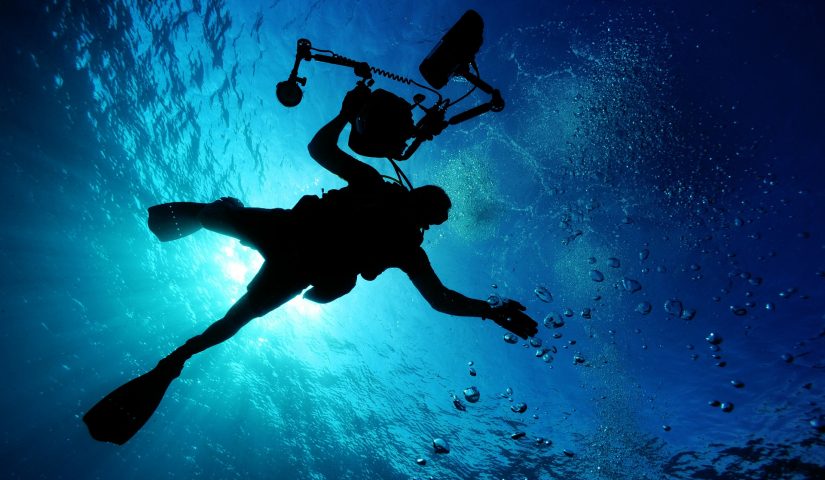
The Catalinas Islands comprise of a group of 20 or so rocky islands, off the Tamarindo Coast. With excellent visibility and warm waters, the area is a haven for many unique ocean creatures such as giant manta rays with wingspans which stretch up to a jaw-dropping 20 feet, humpback whales, reef sharks, angelfish, spinner dolphins and sea turtles.
Shark Cave is very popular for brave divers, where it’s possible to observe sleeping reef sharks. For advanced divers, Bull Sharks can be encountered at the nearby Bay Islands, guaranteeing an adrenalin rush like no other.
The Gulf of Papagayo offers many excellent sites where divers can enjoy turtles, ells, pygmy seahorses, moray eels, white tip sharks and stingrays. The Papagayo is also a wonderful place to be based as some of the best Costa Rica Villas have their location here. Though diving conditions can be variable, if you choose the right day, you could be diving in 80-foot visibility in waters measuring 80 degrees temperature.
Scuba diving in North Puntarenas is popular with this part of the country experiencing excellent sea conditions. The water is warm throughout most of the year, and visibility is good in many areas. You can observe schools of beautiful tropical fish swimming amongst the many rock and reef formations, as well as tuna, dorado, sailfish and hammerhead sharks. During migration season, you can view turtles, whales, and dolphins.
BARBADOS
Barbados is one of the most beautiful Caribbean islands providing an outstanding balance between local West Indian culture and sophistication. Because of the island’s location on the western arc of the Windward Islands, it has captured many lost ships over the years. Consequently, over 200 wrecks have their spots in the crystal-clear turquoise waters off the shores of Barbados. Not only are the Villas in Barbados the best and most unique in the Caribbean, but the diving is also some of the best and most memorable.
The waters off the shore of Barbados offer some of the most well-preserved coral reefs which in turn attract a full array of marine life including lionfish, Stingrays, eels, parrotfish, nurse shark, grouper, conch, lobster, Barracuda and Hawksbill, Leatherback and Green turtles. The Barbados waters have an abundance of colorful corals and sponges, which attract an incredible variety of fish and their prey.
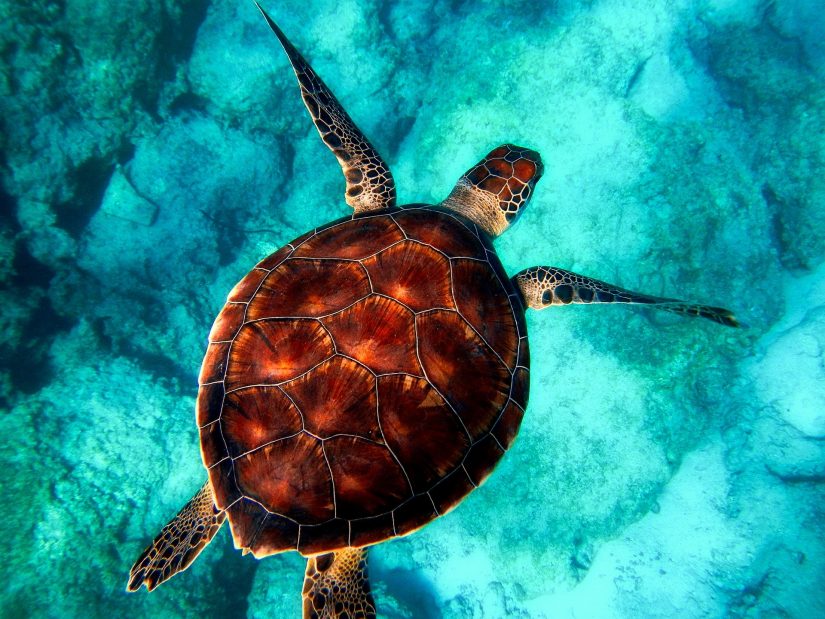
Also, Barbados has the added advantage of having over 3000 hours of sunshine each year and air temperatures of 23-29°C/75-85°F, which ensures no need for divers to wear wetsuits. There are very few days you can’t dive in Barbados, but we do generally recommend avoiding the month of September as it is the peak of the hurricane season.
One of the islands most exciting and popular dive spots include the SS Stravronikita which is a famous 26-meter-long wreck located in the Folkstone Underwater Park. The SS Stravronikita is the perfect place for divers looking to explore something unique and different.
Some of the other incredible diving spots in Barbados include The Carlisle Bay Marine Park, Barracuda Junction, Maycocks Bay, The Cement Factory Pier and Pamir which is a purpose sunk wreck great for beginners.
MUSTIQUE AND THE GRENADINES
The Grenadines comprises of 32 exquisite and unspoilt islands each of which are surrounded by crystal clear warm turquoise waters and a variety of dive sites for every level of diver. Whilst diving in the Grenadines, expect to experience plenty of wrecks, caves, reefs, walls and some of the best muck diving in the Caribbean.
St Vincent and The Grenadines offer something for everyone. Critter’s Corner is where you might find flying gurnards, arrow shrimp, and gold spotted eel, gobies and much more. For advance divers, Bat Cave is a half-submerged cave with hundreds of bats.
Many of our luxury villas in the Grenadines have their location on the beautiful island of Mustique, and as luck would have it, Mustique has some of the best diving spots in the Caribbean. The island of Mustique offers dedicated and professional PADI instructors and divemasters who can cater for complete beginners up to advanced and very experienced divers.
One of the reasons that Mustique is one of the best places to dive in the Caribbean is because, in 2015, the islands marine conservation team in conjunction with The Coral Restoration Foundation (CRFI) pioneered a significant project to both protect and rehabilitate the coral reefs that surround the island of Mustique.
Guests to the island are both encouraged and invited to learn about the fascinating project.
Mustique is one of the best places to dive in the Caribbean where its possible to enjoy a long and lazy drive dive covering exquisitely beautiful undamaged corals.
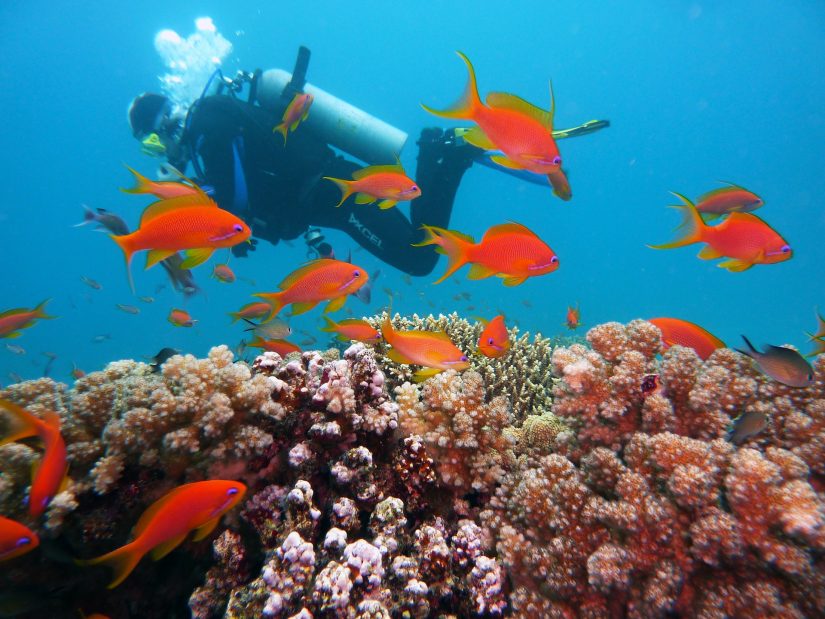
CONCLUSION
The best diving in the Caribbean is found in the surrounding waters for some of the regions most beautiful islands. It is little wonder that the Caribbean region as attracted divers and adventurers from all over the world. Even the most experienced diver will enjoy some of the world’s most exciting wrecks, beautiful coral reefs, sheer walls and an incredible diversity of marine life.
About Alexandra Baradi
Alexandra Baradi is the founder and owner of Exceptional Villas. She started the company 1992. Alex is a hotel manager by background and has travelled around the world in search of the best villas.
Her personal passion for travel and her entrepreneurial flair for making guest feel very special from the moment they enquire to the moment they arrive home, has enabled Exceptional Villas to become the world’s leader in luxury villas.
She believes anything is possible when you travel with Exceptional Villas and ensures you will be pampered every step of the way.
Alexandra and her team all have one thing in common; to provide their guests with an unmatched holiday experience and to go beyond expectations.
Each of the team members specialise in just one destination rather than in multiple destinations allowing them to become total experts in their fields.
Both Alexandra and her team spend much of their time travelling to all the destinations inspecting new villas and re-inspecting already featured villas.


